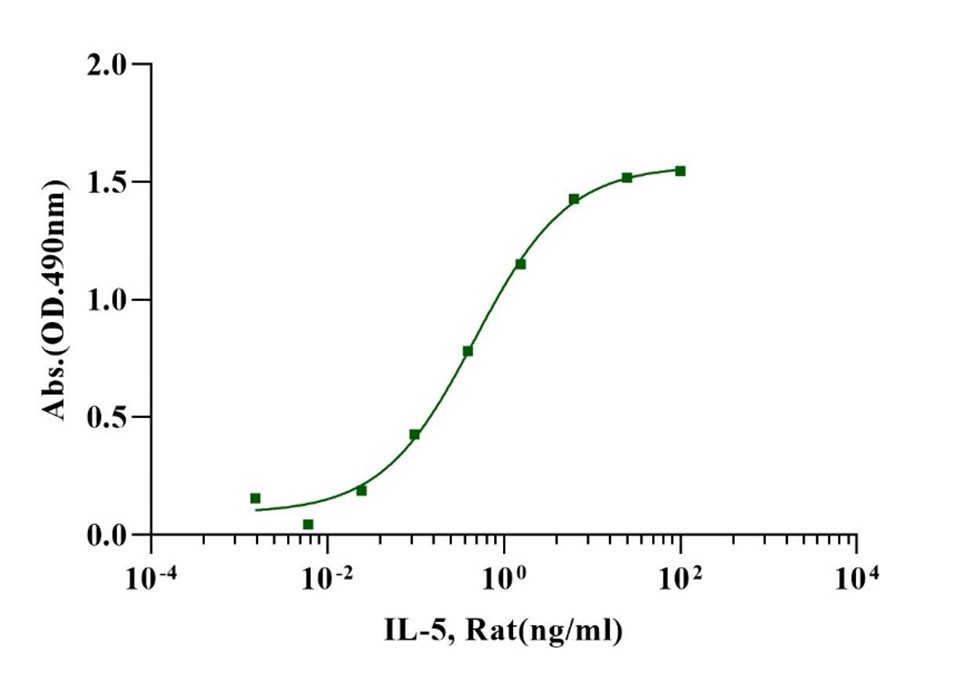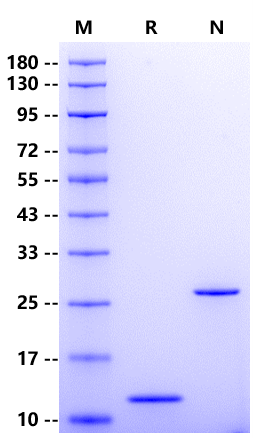1、Milburn M V. et al. (1993) A novel dimer configuration revealed by the crystal structure at 2.4 A resolution of human interleukin-5. Nature. 363(6425): 172-176.
2、Woodcock J M. et al. (1994) Three residues in the common beta chain of the human GM-CSF, IL-3 and IL-5 receptors are essential for GM-CSF and IL-5 but not IL-3 high affinity binding and interact with Glu21 of GM-CSF. EMBO J. 13 (21): 5176-85.
Interleukin 5 (IL-5) is predominantly produced by Th2 cells to regulate differentiation and proliferation of eosinophils. As the major cytokine in eosinophil development, IL-5 induces eosinophil migration, activation, and survival. The primary source of IL-5 is TH2 lymphocytes, but mast cells are also a source in the airways. IL-5 is increased in bronchial biopsies and BAL fluid and serum from symptomatic asthmatic patients, knockout of IL-5 in mice eliminates AHR and eosinophilia, and overexpression or treatment with rIL-5 results in asthma-like lung histopathology. Blockade of IL-5 in humans with mepolizumab, an anti-IL-5 antibody, decreases eosinophils in the sputum and general circulation, and in asthma patients exhibiting hypereosinophilia and resistance to steroid therapy mepolizumab reduces exacerbations.

Measured in a cell proliferation assay using TF‑1 human erythroleukemic cells. The ED50 for this effect is less than 0.5ng/ml.
